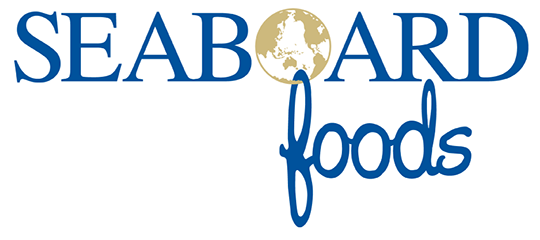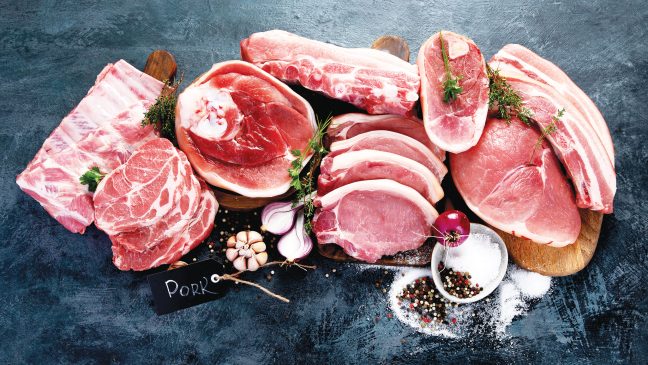Pork is a great option for protein during these inflationary times, according to Ozlem Worpel, VP of marketing, innovation and communication with Seaboard Foods. Shelby Publishing talked with Worpel at a recent trade show about what’s happening in the industry.
Worpel said pork has not risen much in price due to inflation, with more increases seen on the beef side. She also noted that pork is becoming more popular.
“It’s interesting, because everybody thinks of pork as the meat in-between – you have beef and then you have chicken,” she said. “But pork, especially ground pork, has been gaining a lot of attraction. It’s a very affordable protein. It’s versatile.”
As people are eating at home more due to inflation, there are a lot of opportunities with pork.

According to Worpel, the industry is starting to figure out what the “new normal” is after the COVID-19 pandemic.
“It’s going to be different than what the old normal was,” she said. “We’re going to start establishing some baselines after COVID. And then I think we’re going to need to start measuring against that instead of going back and saying, ‘This is what it was before COVID.’ So that’s what I feel where the industry needs to be.”
Worpel, who previously has worked with Cargill and Tyson, is enjoying her new position with Seaboard Foods. She said the company has been very welcoming, and she inherited a great team to work with. On the innovation side, Worpel said they are looking at “what is next, which flavor we should be looking at.”
Seaboard Foods products are known by four brand names: Prairie Fresh, Daily’s Premium Meats, Seaboard Farms and St. Joe Pork.
The company has a proprietary technology to help identify which cuts should be designated for its Prairie Fresh USA Prime pork brand.
“It is not by eye, it is by technology,” Worpel explained. “That makes it more consistent, and we are able to set our limits accordingly. It is very consistent every time – the marbling and the color.”
She said the company also is looking at “what do we want to be when we grow up.” It is vertically integrated and owns most of the farms where the hogs are raised.
“We do a great job raising our hogs. Our plants do a great job. But what is next?”
Worpel said today’s consumers prefer convenience. Seaboard Foods will be looking at new value-added protein products that offer more of it.
“Our team right now on innovation and marketing is really focused on our three- to five-year plan – where we want to be in three years and in five years, going forward. That’s our focus right now,” she said.
Women in meat industry
When she came to the U.S. in 2006, Worpel had no background in the meat industry. She also noted that there were not many women in the industry. Now, when attending the American Meat Conference and looking out over the audience, “it is pretty amazing how many women we have there.”
She said at Seaboard Foods, her goal is to make sure her team members have opportunities to grow and to be considered for advancement.
“I try to encourage them; I try to give them more responsibility. I really try to make them seen more.”
She shared a story of the difference between men and women looking at a job description. “Men look at it, they say, ‘Oh, 50 percent of it I can do, so I’ll apply. And we as women look at it and say, “Oh my gosh, I can only do 50 percent.’ Unless we think we’re 100 percent, we feel like we shouldn’t [apply]. We should.”
Worpel noted that women need to support each other more and open doors for each other. And that kind of support was evident at the Annual Meat Conference in Dallas, Texas.
“We support each other, we meet with each other, talk about what we can do for each other,” she said. “Those are the things that really helped me grow, network and find the right people to partner with.”
Looking to future
Worpel said learning more about the behavior of consumers, particularly the younger generations, will be important going forward in the meat industry.

“Technology, time constraints and everything is affecting how we shop, how we prepare food, how we look at food. The young generation is more willing to try different things, but they also want convenience. So I think we will need to, as the meat industry, look at what that generation is asking for.”
Things such as convenience, flavor, packaging are all important to these consumers. “The consumer profile is changing. We, as suppliers, I think, need to understand that.”
She said while change often is difficult and involves costs, it is necessary to adjust to the needs of the consumer.
“We will have to find that balance of providing them what they need at a price that is affordable. So that’s where, in my mind, the meat industry is going forward. We’ll be looking at more value added and more convenience, more prepared, easy to eat, easy to cook. All of those will be the things that will be changing the future for the generations.”
Worpel added that she believes there is a lot of misinformation out there about the meat industry, in terms of nutrition and sustainability, for example. She said protein bars are popular, but the origin of protein is beef, pork and chicken.
“We need to do a better job of communicating that message to them, trying to educate them as much as we can.”
For more information, visit seaboardfoods.com.
To read more meat, seafood and poultry news from The Shelby Report, click here.

